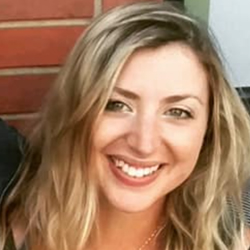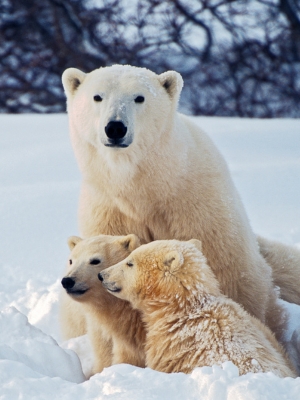In celebration of Father’s Day this weekend, we want to extend gratitude to all father figures and family structures. As demonstrated within the human and nonhuman animal kingdoms, a wide range of different (but equally as important) father figure roles exist in nature; from the helicopter parent emperor penguin dads to the playful red fox dads, all roles contribute to the success and wellbeing of their offspring.
Living in perhaps two of the most different environments on the planet, emperor penguins and seahorses may be the most famous animal dads, as both are known for their unwavering devotion to ensuring the survival of their offspring and often sacrifice their own needs for their families.
Emperor Penguins
While most bird species split the time parents take turns to incubate their eggs, after laying her egg, the female emperor penguin transfers it to the father to take a much-needed break to rest and feed. This is a very delicate process; if the egg slips onto the freezing ice or snow beneath them for too long, the unborn chick is unlikely to survive. The father then incubates the egg in his brooding pouch for the next 65 days, during which time he does not eat. After the egg hatches, the father must always keep the baby chick close to him, as the new-born chick cannot regulate their body temperature just yet. The dads in the group then work together to help keep themselves and their offspring warm: they huddle together to conserve as much heat as possible between them. Even more impressive, the males will circulate within the mass, allowing each dad a turn at the cool outermost edge and warm center. After at least two months, the mother finally returns from her feeding venture, and takes over for dad while he leaves in search of some much-needed food and rest. It seems like these dads in Antarctica don’t get a lot of time for themselves!
Seahorses
While emperor penguin fathers are extremely physically involved with their offspring, seahorse fathers are very biologically involved with their offsprings’ development leading up to the birth. Differing from the reproductive process of most other animals, male seahorses are the ones to become pregnant and carry the eggs to term. This process begins by the female inserting her eggs into the male’s brood pouch (located on his abdomen). When the eggs are in place, the male fertilizes them and waits several weeks for the eggs to mature. After a few weeks, the male will give birth to the babies – sometimes up to 1,000 seahorse babies are born at once!
Red Foxes
Less recognized but equally as important animal fathers include red foxes, wolves, ostriches, African wild dogs, and golden lion tamarins. After a female red fox gives birth, she will stay in her den to feed her young and keep them warm. The male will venture out every few hours for food to feed himself and the mom. Once the pups are old enough, dad will play with them outside of the den to give mom a break. As in many other mammal species, play functions as a tool that allows the father fox to pass on his knowledge of survival skills to the next generation. Through play, he will teach them how to hunt, scavenge, and escape predators by hiding food for the pups to find on their own and roughhousing.
Wolves
In highly social wolves, while the whole pack is usually involved in helping raise the pups, wolf dads are primarily responsible for guarding the den and leading the hunt to feed the rest of the pack. Wolf packs are typically made up of a breeding male and female pair (who tend to stay together for life), their offspring, and sometimes other non-breeding adults. The average pack size is about seven animals but can range to up to thirty wolves depending on the area.
Ostriches
In ostriches, after a female lays her eggs, both mom and dad take turns incubating them: the female during the day, and the male at night. Scientists believe that the male incubates at night because his darker coloration makes him less visible to predators and thus enhances his ability to protect the nest. Once the eggs hatch, dad will defend the hatchlings from predators and teach them how to feed.
African Wild Dogs
African wild dog pups are unable to eat solid foods until they are about ten weeks old. To help give them the calories these active youngsters need, their father will swallow their food and then regurgitate the soft, baby-approved version for the pups to eat.
Golden Lion Tamarins
By two weeks old, golden lion tamarin infants are carried on their father’s back nearly 24/7. Dad only gets a break when he hands them over to their mother one at a time every two to three hours to nurse the baby for around 15 minutes. The infants will typically ride on the father’s back until they are six to seven weeks old – talk about “active parenting” – and they manage to do it in a rainforest!
Let’s Hear It for Wild Animal Dads!
Even these incredible animal dads can’t do it all on their own! To help support our efforts to protect wild animals and their families, please consider symbolically adopting a wolf, red fox, or any of the other wild animal species available for adoption today – just in time for a last-minute gift for the father figure in your life this Father’s Day!
Keep Wildlife in the Wild,
Devan
Dear Reader,
We are a nonprofit committed to wildlife conservation, welfare, and rescue. Making resources free and widely distributed, like our news items, is an important part of our mission. If you found this article helpful, enjoyable, or enlightening, please donate to help keep these resources available, and Keep Wildlife In The Wild.
Thank You,
The Born Free USA Team

 Dear Reader,
Dear Reader,